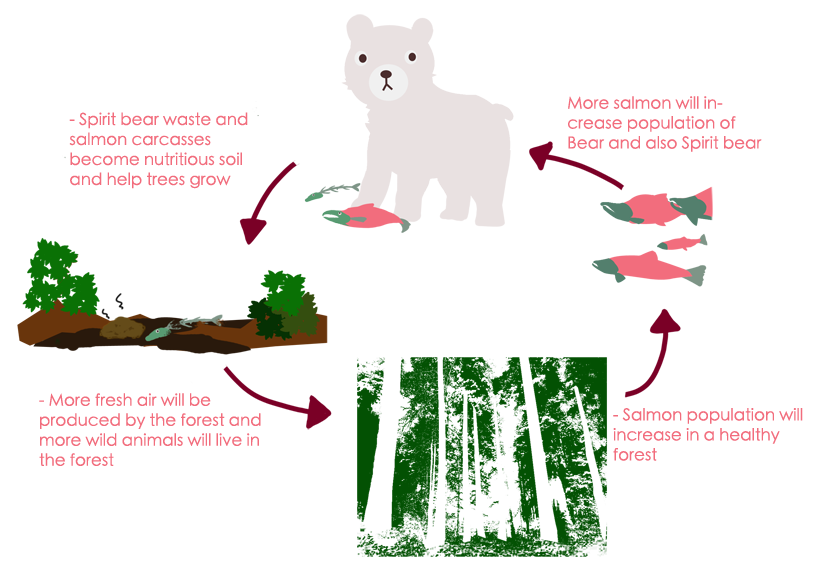Environment/Problems
ENVIRONMENT/PROBLEMS
The spirit bears and their impact on the ecosystem
– Spirit bears and the environment rely on each other.
– Spirit bears are not the product of a genetic fluke, but have developed to serve a critical role in its ecosystem.
– White fur = able to catch more salmon than any other wild animal = more salmon carcasses left to rot = nourishes the soil = trees and other plants able to grow faster and stronger.
– The larger the trees, the healthier the ecosystem.
– The more trees, the more carbon intake – rainforests are carbon sinks, or the lungs of the planet.
– Nutritious soil and clean air helps the rainforest sustain more biomass, which provides shelter and shade along rivers and streams, ensuring the salmon have a perpetual place to lay their eggs.
BUT!
– Decreasing population of spirit bears means less waste and less salmon carcasses. The amount of nitrogen in the soil would decrease dramatically and would impact the growth of trees and stunt the overall productivity of the wilderness.
– Salmon populations would dwindle as well.
– Without the trees, the spirit bears would lose their dens, and with less salmon to catch, they would lose their main source of food, forcing this critical player in the nutrients cycle to look elsewhere for a better habitat.
– If the ecosystem is altered or destroyed, the spirit bear may be forced to interact with more non-Kermode black bears, which would dilute the gene pool.
– As the gene that produces the spirit bears’ white coats is recessive, the bear would eventually disappear.

